Alvin Langdon
Coburn
History
Coburn, Alvin LangdonBritish, 1882-1966
Alvin Langdon Coburn's major contribution to the development of the photographic art came midway through his career, when he began to make the first known examples of purely abstract photographs, which he dubbed Vortographs. These were inspired by the English vorticist movement in painting, an offshoot of cubism.
In 1910 and 1911 Coburn traveled through the western U.S. making pictures of the Grand Canyon and other natural scenes. He returned to New York in 1912 to make his last photographs in America, a series of pictures from the tops of skyscrapers. Pointing his camera straight down, he eliminated the horizon line and created a flattened perspective and abstracted view that was all but unknown in photographic work up to then.
The concern with abstraction soon became a primary one for Coburn. In 1917 he showed his first Vortographs - pictures made with the aid of a kaleidoscope-like mirror attachment in front of the lens.
After a solo exhibition at the Royal Photographic Society in 1924, Coburn's photographic output began to wane. In 1930 he donated his extensive collection of photographs by his predecessors and contemporaries to the Society, and he all but ceased photographing.
He did not reappear on the photographic scene until the middle 1950s, when he again began to make rather quiet pictures of nature scenes and other subjects. Coburn died in 1966 at the age of 84.
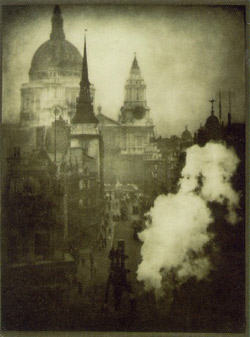
St Paul's Cathedral from Ludgate Circus
1905
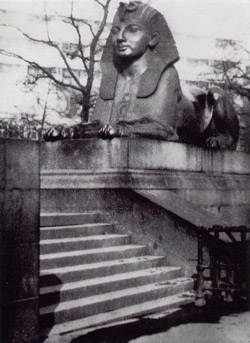
On the Embankment
1905
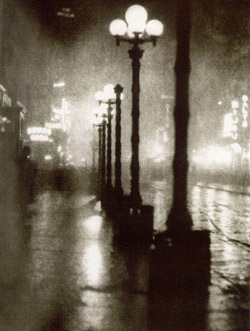
Broadway at Night
1909
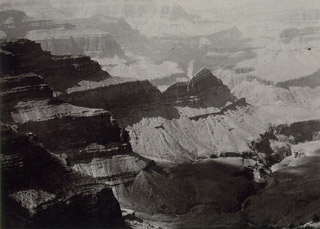
Grand Canyon
1911

The Octopus
1912
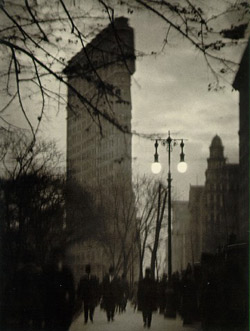
Flatiron Building
1912

Vortograph
1917